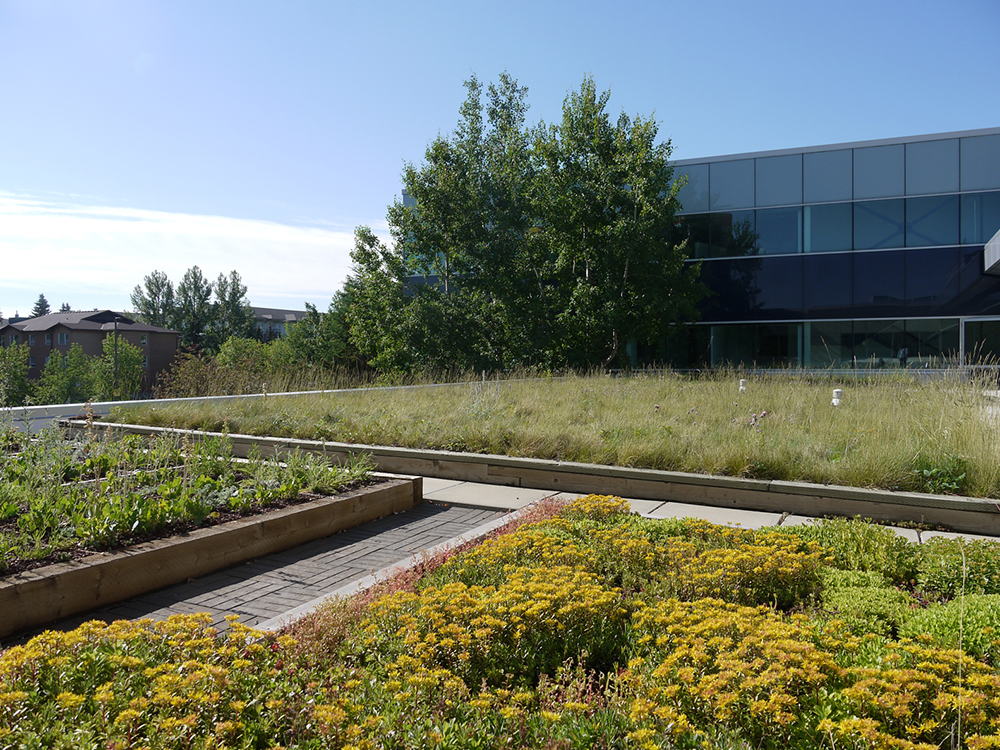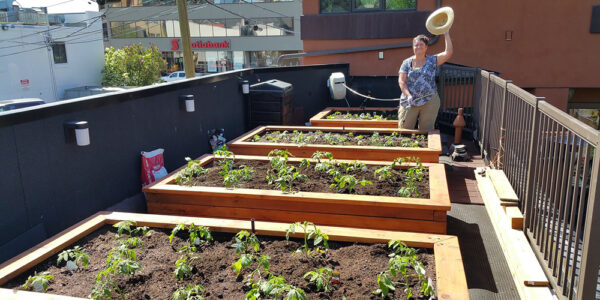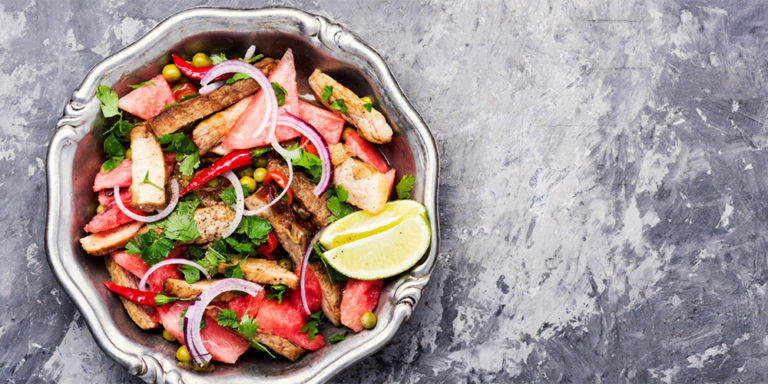Rooftop gardens are much more than a ‘green thumb’ fad.
They can produce fresh food for the family, moderate and naturally purify stormwater, and help clean the air we breathe, all while storing carbon dioxide.
Climate-friendly ‘green roofs’ are also substantially cooler than those covered in black asphalt, says Kerry Ross, a Calgary-based green roof professional, in a recent National Observer article.
In fact, a green roof can cut air conditioning bills by between a quarter and a half in the summer.
Green roofs can make a surprisingly big difference in city liveability and sustainability.


Roof-top Gardens versus Green Roofs
Before we go further, we should define what it is we are talking about here.


A green roof, also known as a living roof, refers to a building’s roof that is either entirely or partially covered with plants.
The roof vegetation grows in a special layer of soil placed above a waterproof membrane on the structural roof. The soil binds to toxins, thus purifying the runoff.
Green roofs also have other components, like a root barrier to protect the membrane, along with systems for water drainage and irrigation.
In contrast, rooftop gardens, where plants grow in individual pots or planters, don’t usually qualify as green roofs.
Some people are planting gardens into the soil they lay on roofs, so there can be green rooftop gardens as a hybrid system.
Either way, both green roofs and rooftop gardens provide substantial benefits.
The Greening of Canadian Roofs
Ross, founder of Alberta-based Green T Design, is one of the first accredited Green Roof Professionals in Western Canada.
Ross helped organize the Alberta Prairie Green Roof Conference in June of 2023, coordinates yearly green roof tours, and currently leads a research and demonstration green roof project at Calgary Municipal Hall.
Ross also spearheaded the Alberta Ecoroof Initiative, a long-term project to raise awareness and experiment with green roof systems and plant species.
Obviously, Ross is passionate about green roofs and is helping pave the way for Alberta to be a leader in the green roof initiative.
She wants more green roofs in the province.
Old Becomes New Again


The concept of green roofs dates back thousands of years.
As National Observer reporter Natasha Bukowski notes, greenery on rooftops dates as far back as 600 BC, when Nebuchadnezzar reportedly built the Hanging Gardens of Babylon for his wife Amytis.
Now, they are catching on in Canada thanks to advocates like Kerry Ross.
For example, the roof of Alberta’s legislature now supports an ecosystem of native wildflowers.
Rocky Mountain Soap in Canmore has two living green walls, one exterior and one interior.
The Vancouver Public Library has a 1,850-square-metre green roof that grows drought-resistant bunchgrass and kinnikinnick. Stormwater flows under the soil into large spouts that guide it down the building into the sewer system.
Toronto Metropolitan University’s Urban Farm produces 3,000 kg of tomatoes, corn, potatoes, eggplant, squash, kale and other crops every year from green rooftop gardens perched five and eight storeys above ground.
Is a Green Roof Right for You?
All of the benefits of green roofs sound amazing, but before you rush down to the garden store, there are essential things to consider first – structural engineering, climate conditions and the right mix of plants and soil.
A green roof requires a protective layer that prevents plant roots and water from penetrating the building.


Hot tar on the roof is the most expensive option for waterproofing but is also the most effective, ensuring a green roof will survive 20 to 30 years.
Next comes the drainage layer needed to allow excess water to escape.
“You still want that water to be able to drain away,” says Karen Liu, a green roof specialist with Toronto-based Next Level Stormwater Management. “But you don’t want all that soil to be clogging the drainage layer.”
A 10- to 12-mm gap below the soil permits water to drain. A trained green roof professional can help ensure that proper drainage is constructed.
You’ll also want to hire a structural engineer to ensure your building is suitable.
Small systems with less than six inches of soil weigh 25 to 50 pounds per square foot.
Large-scale systems for shrubs and trees need deeper soil and weigh 80 to 150 pounds per square foot, so you will want to ensure that your building is structurally up to the task of holding all that extra weight!
The type of soil you use depends on the kind of garden you want. High-organic soil supports a richer plant ecology that gives off more moisture, while high-mineral soil is great for succulent plants such as aloe vera.
In colder provinces like Alberta, plants can freeze if the soil is too shallow or less than 4 inches deep, so here, we need a thick layer of soil.
Basic green roofing costs about $15 to $20 per square foot, but that depends on current construction and material costs.
If you do it right, green infrastructure can double a roof’s lifespan.
For more information about green roofs in Alberta, contact Green T Design to see if you can retrofit your roof to green, grow food for your family, and benefit from all the potential of these environmentally friendly roofs.








